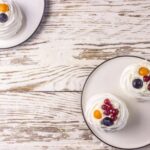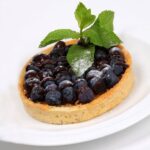Are you wondering, “How do you decorate a cake with icing?” Cake decoration is an essential part of the baking process, and icing plays a crucial role in enhancing the appearance of a cake.
Whether it’s a simple birthday cake or an elaborate wedding cake, the right icing techniques can elevate the overall look and appeal of your creation. In this article, we will explore the various types of icing, necessary equipment, and step-by-step techniques for decorating a cake with icing.
Icing is more than just a sweet coating on top of a cake; it is also a form of edible art that allows bakers to express their creativity and personalize their creations. The type of icing used can significantly impact the final look and taste of the cake. From buttercream to fondant to royal icing, each has its unique characteristics and can be used for different decorating techniques.
In addition to discussing various types of icing, we will also delve into the necessary tools and equipment needed for successful cake decoration with icing. From piping bags to spatulas to turntables, these tools play an essential role in achieving professional-looking results. So, whether you’re a beginner or an experienced baker looking to up your decorating game, this article will guide you through everything you need to know about decorating a cake with icing.
Types of Icing
When it comes to decorating a cake with icing, the type of icing you choose can make a significant impact on the final appearance and texture of your creation. There are several types of icing that are commonly used in cake decoration, each with its own unique characteristics and uses.
One popular type of icing is buttercream, which is known for its creamy texture and versatility. It can be easily flavored and colored, making it ideal for various cake decorating techniques such as piping borders, creating rosettes, and writing messages. On the other hand, royal icing is a hard-drying icing that is often used for intricate designs such as lacework and detailed piping. Its stiff consistency allows for more precise decorative elements on cakes and cookies.
Another type of icing commonly used in cake decoration is fondant, which provides a smooth and flawless finish to cakes. Fondant is perfect for creating sculpted designs, covering wedding cakes with intricate details, or achieving a clean canvas for painting edible art on a cake. Lastly, cream cheese icing offers a tangy flavor and creamy texture that complements carrot cakes and red velvet cakes exceptionally well.
Understanding the characteristics of each type of icing can help you determine which one suits your desired cake decorating technique best. When learning how to decorate a cake with icing, it’s important to consider the specific qualities and uses of each type of icing in order to achieve professional-looking results at home. With the right knowledge and practice, you can master the art of using different types of icing to create stunning decorative effects on your cakes.
Equipment Needed
When it comes to decorating a cake with icing, having the right tools and equipment is essential for achieving professional-looking results. Here is a list of all the necessary tools and equipment needed for cake decoration with icing:
Piping Bags
Piping bags are essential for applying icing in various designs and patterns. It is important to have a variety of piping bag sizes to accommodate different amounts of icing and create different designs.
Tips
Decorating tips come in various shapes and sizes, each designed for a specific decorating technique. From round tips for writing and outlining to star tips for creating rosettes and borders, having a variety of tips can help achieve versatile decorative effects.
Spatulas
Offset spatulas are perfect for spreading and smoothing icing on the surface of the cake. A smaller straight spatula can be used for precision work such as filling in details or creating intricate designs.
Turntables
Turntables are incredibly useful when it comes to frosting a cake with icing. They allow for easy rotation of the cake, which makes it easier to apply an even layer of icing around the entire cake.
Other essential equipment includes a bench scraper, which helps achieve smooth and sharp edges on the sides of the cake, as well as a cake stand or pedestal to display the finished decorated cakes. With all these tools at your disposal, you’ll be well-equipped to decorate your cakes with beautiful icing designs.
Preparing the Cake
When it comes to decorating a cake with icing, the first step is to ensure that the cake itself is properly prepared. This involves several key steps, including leveling the cake layers, filling them with delicious fillings, and crumb-coating the cake to create a smooth surface for the final icing. By following this step-by-step guide, you can ensure that your cake is not only delicious on the inside but also beautifully decorated on the outside.
Leveling the Cake
Before you even think about applying icing to your cake, it’s important to make sure that your cake layers are level. This can be achieved by using a long serrated knife or a cake leveler to carefully trim off any domed tops and create an even surface. Leveling ensures that your cake layers stack neatly on top of each other and prevents any unevenness in the final decoration.
Filling the Layers
Once your cake layers are leveled, you can add delicious fillings between each layer to add flavor and moisture to the cake. Whether it’s fruit preserves, flavored buttercream, or decadent ganache, spreading a thin layer of filling between each cake layer will elevate the taste of your cake and add depth to each bite.
Crumb-Coating
The next step in preparing your cake for icing is crumb-coating. This involves applying a thin layer of icing all over the exterior of the cake to seal in any crumbs before applying the final coat of icing. The purpose of crumb-coating is to create a smooth surface for your final decoration and prevent any unsightly crumbs from showing through in the finished product.
By following these steps for preparing your cake for icing, you can set yourself up for success when it comes to decorating with icing and achieve professional-looking results at home.
Basic Icing Techniques
Decorating a cake with icing is an essential skill for anyone who loves to bake. Learning how to decorate a cake with icing can take your homemade cakes from simple to stunning, and it’s easier than you might think. Below are some basic icing techniques that you can use to create beautiful and professional-looking designs on your cakes.
Here are some basic icing techniques:
- Smooth Icing: To achieve a smooth icing surface, start by applying a thin layer of icing all over the cake to create a base coat. Then, use a bench scraper or offset spatula to smooth out the icing, ensuring an even and flat surface.
- Rosettes: Use a piping bag fitted with a star tip to create rosettes on top of the cake. Simply apply pressure to the piping bag while making circular motions to create beautiful rosette designs.
- Borders: Adding borders to your cake can give it a polished look. You can use different types of tips, such as round or star tips, to create various border designs around the edges of the cake.
- Writing: Use a small round piping tip and thick consistency icing to write messages or names on the cake.
Once you’ve mastered these basic techniques, you’ll be ready to move on to more advanced icing decorations. With practice and patience, you’ll be amazed at how quickly you can improve your skills in decorating cakes with icing.
Remember, practicing these techniques is key when it comes to honing your skills in cake decoration with icing. Don’t be afraid to experiment with different designs and colors until you find what works best for you.
Advanced Icing Techniques
When it comes to cake decoration with icing, mastering advanced techniques can take your creations to the next level. One of the most impressive advanced icing techniques is creating buttercream flowers. With the right piping tips and a steady hand, you can pipe delicate roses, daisies, or even succulents onto your cake. By using different colors and layering techniques, you can achieve a stunning floral arrangement that will impress any guest.
Another advanced icing technique that adds an elegant touch to cakes is marbling. Using a blend of colors in your icing, you can create a beautiful marble effect that adds depth and visual interest to your cake. Whether you opt for soft pastel hues for a romantic look or bold contrasting colors for a modern feel, marbling is a versatile technique that allows for endless creativity.
For those looking to add a gradient effect to their cakes, ombre icing is the perfect technique to master. By blending different shades of icing together in a seamless transition, you can create a stunning ombre effect that can be tailored to fit any color scheme or theme. Whether you’re decorating a birthday cake or a wedding cake, mastering the art of ombre icing will elevate your designs and showcase your skills as a decorator.
As you venture into advanced icing techniques such as buttercream flowers, marbling, and ombre effects, remember that practice makes perfect. Don’t be discouraged if your first attempts don’t turn out exactly as planned – keep experimenting with different colors, textures, and designs until you find what works best for you. With dedication and patience, you’ll soon be able to create professional-looking cakes adorned with intricate icing decorations that are sure to impress.
Troubleshooting
When decorating a cake with icing, it’s common to encounter certain issues that can affect the final appearance of your creation. One common problem is air bubbles in the icing. These can create unsightly bumps on the surface of the cake. To prevent air bubbles, be sure to properly mix and prepare your icing before applying it to the cake. Using a spatula or offset knife to spread the icing evenly can also help minimize air bubbles.
Uneven icing can also be a challenge when decorating a cake. This occurs when the layer of icing on the cake is not smooth and consistent throughout. To achieve an even coat of icing, it’s important to crumb-coat the cake first, which involves applying a thin layer of icing to seal in any loose crumbs before adding the final layer of icing. Using a turntable while applying the icing can also help ensure an even and smooth finish.
Color bleeding is another issue that may occur, especially when using vibrant colored icings or working in high humidity environments. To prevent color bleeding, make sure that the cake is thoroughly chilled before applying any additional layers of icing with different colors. Additionally, using gel food coloring instead of liquid food coloring can help reduce the risk of colors bleeding into each other.
Here are some helpful tips for addressing these common issues: Properly prepare your icing to avoid air bubbles; crumb-coat your cake before adding the final layer for even icing; chill your cake before adding multiple layers with different colors to avoid color bleeding.
| Common Icing Issue | Solution |
|---|---|
| Air Bubbles | Properly mix and prepare your icing; use a spatula or offset knife for smooth application |
| Uneven Icing | Crumb-coat your cake before adding final layer; use a turntable for even application |
| Color BleedingChill your cake before adding multiple layers with different colors; use gel food coloring instead of liquid food coloring |
Inspiration and Tips
In conclusion, cake decoration with icing is a fun and creative way to enhance the appearance of your cakes. Whether you are a beginner or an experienced baker, there are various types of icing, tools, and techniques that can help you achieve professional-looking results at home.
By understanding the different types of icing, such as buttercream, royal icing, fondant, and cream cheese icing, you can choose the best option for your desired cake decorating technique. Additionally, having the right equipment such as piping bags, tips, spatulas, and turntables is essential for achieving intricate designs and smooth finishes.
Furthermore, preparing the cake for icing is crucial in ensuring a flawless result. The step-by-step guide on leveling, filling, and crumb-coating will help create a perfect canvas for your decorations.
From basic icing techniques like smooth icing and writing to more advanced techniques such as buttercream flowers and marbling effects, there are endless possibilities for creativity. Moreover, addressing common issues that may arise during cake decoration with icing and providing troubleshooting solutions will help overcome any obstacles in the decorating process.
Lastly, drawing inspiration from theme-based cakes and seasonal designs can spark creativity in your decorating endeavors. With these creative ideas and helpful tips in mind, you can confidently embark on your cake decoration journey with icing.
So next time you ask yourself “how do you decorate a cake with icing? “, remember that by mastering different types of icing, utilizing the right equipment and techniques, and finding inspiration from various sources – you can achieve beautifully decorated cakes that will impress everyone at the table.
Frequently Asked Questions
What Is the Best Way to Put Icing on a Cake?
The best way to put icing on a cake is to start with a crumb coat to seal in the crumbs, then apply a thicker layer of icing for a smooth finish. Using an offset spatula can help achieve an even coating.
How Do You Make a Plain Cake Look Fancy?
To make a plain cake look fancy, you can add decorative elements like fresh berries, edible flowers, or chocolate shavings. Dusting the top with powdered sugar or cocoa powder can also give it an elegant touch.
How Do You Decorate a Cake Like a Pro?
Decorating a cake like a pro involves using the right tools, such as piping bags and various tips for different designs. It’s important to plan out the decoration beforehand and practice techniques like piping rosettes or creating intricate patterns for a professional look.

Welcome to my blog about home and family. This blog is a place where I will share my thoughts, ideas, and experiences related to these important topics. I am a stay-at-home mom with two young children. I hope you enjoy reading it! and may find some helpful tips and ideas that will make your home and family life even better!





